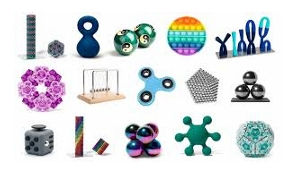Music Therapy and Sensory Stimulation
- McKenna Selissen, MT-BC

- Jun 19, 2025
- 3 min read
Updated: Jun 26, 2025
As humans, we all have sensory needs that must be met in order to function, feel safe, and to maintain emotional and physical well-being. For individuals with disabilities, sensory needs and processing can be more complex than for those who are neurotypical. People who are neurodivergent may be hypersensitive or hyposensitive to certain stimuli, making it even more important to recognize and response to these unique sensory needs.
Sensory stimulation plays a vital role in supporting the overall well-being and development of individuals with disabilities and it can be a powerful component of music therapy sessions. "When engaging in music therapy with instruments, props, and songs, our auditory, tactile, and visual systems are naturally stimulated" (Dynamic Lynks).
As music therapists, it's essential to recognize that each person experiences and processes sensory input differently. By integrating a variety of sensory tools into our sessions, we can better meet individual needs and create meaningful, supportive therapeutic experiences.
Here are a few instruments and props that I often use to promote sensory integration!
Cabasa-

The cabasa is a wonderful tool for integrating tactile stimulation and can be used on different parts of the body. Many of my clients love feeling the beads roll around their hands, arms, legs, back, and feet. It's especially useful for introducing touch-based input in a rhythmic, predictable way.
Ocean Drum and Rainstick-
These instruments offer a combination of auditory, tactile, and visual stimulation. When played softly, they can promote relaxation and support regulation goals. On the other hand, some clients enjoy using them to create big, energetic sounds by shaking or rotating them with more force, making them very versatile.
Shell Shakers-

Shell shakers offer a unique multisensory experience. They produce a distinct sound and have a textured, natural feel. Many clients enjoy having the shells gently brushed along their arms, legs, hands, or back--much like the cabasa, for both tactile and auditory input.
Hand Chimes-

Hand chimes are another great way to combine tactile and auditory stimulation. Running fingers or hands along the chimes offers a soothing sound while engaging the sense of touch. These are ideal for clients who seek higher levels of sensory stimulation in a calm, controlled way.
Buffalo Drum-

I often use the buffalo drum as a warm-up for sensory integration activities. It can be a full-body experience when the drum is gently tapped around the client's body, allowing them to physically feel the beat. Since every client responds differently, it's important to observe their body language closely and adjust accordingly.
Guitar-
While the guitar is typically associated with auditory stimulation, it can also be powerful tactile tool. The vibrations from the strings resonate through the guitar's body, which clients can feel when they touch the instrument. Strumming the guitar engaged multiple neural processes and creates a dynamic multisensory experience. Because this can sometimes be overstimulating for some, I usually introduce the guitar gradually.
Non-instrument props to use in sessions!
Fidgets-

Although not traditional musical tools, fidgets can be incredibly helpful in sessions. They support self-regulation, reduce anxiety, and offer clients a tangible way to stay engaged. Some clients even use them during music-making or relaxation activities.
Sensory Bins-

Sensory bins are used to incorporate a variety of objects for sensory engagement (tactile, auditory, even olfactory stimulation!) In previous sessions, I have created sensory bins around themes and then chose songs to play surrounding that theme.
Chrome Music Lab- Chrome Lab is a website that supports a wide range of sensory and cognitive needs by offering accessible and customizable activities that combine sound, color, and motion. This is one of my favorite sites to use with clients at the end of sessions!




Comments